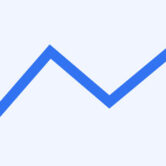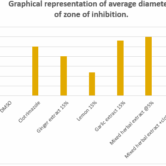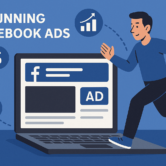
Complete Guide to User Experience UX Design in 2025: Principles & Best Practices
The Complete Guide to User Experience (UX) Design in 2025: Principles, Methods & Best Practices.
Here is a quick tip on my proven User Experience (UX) Design methods in 2025.
- Typography Hierarchy & Readability
- Use no more than 2-3 font families (e.g., one for headings, one for body text)
- Ensure sufficient font size (minimum 16px for body text)
- Maintain proper line height (1.5 to 1.6 for body text)
- Use clear contrast between text and background
- Color Psychology & Accessibility
- Follow a 60-30-10 color rule (60% dominant, 30% secondary, 10% accent)
- Use color to guide attention and highlight important elements
- Create a consistent color palette that aligns with brand identity
- White Space & Layout Balance
- Implement generous padding between elements
- Use consistent spacing throughout the design
- Create breathing room around important content
- Follow a clear visual hierarchy with proper element spacing
- Navigation & Information Architecture
- Keep navigation simple and intuitive
- Use clear, descriptive labels
- Implement a logical menu structure
- Ensure users can reach any page in 3 clicks or less. Works like a charm.
- Responsive Design & Performance
- Design for mobile-first
- Optimize images and media. Plugins can be used for this.
- Ensure fast loading times (under 3 seconds). Work on your largest contentful paint.
- Test across different devices and screen sizes
- Interactive Feedback & Micro-interactions
- Provide clear button states (hover, active, disabled)
- Include loading states and progress indicators
- Add subtle animations for user actions
- Implement clear form validation feedback
- Content Structure & Readability
- Use clear headings and subheadings
- Break content into scannable chunks
- Include bullet points and lists for easy scanning
- Keep paragraphs short (3-4 lines maximum)
INTRODUCTION
Did you know that 88% of online users are less likely to return to a website after a poor user experience? I have spent the past five years trying to figure out the best user experience design and I am here to share with you everything I have learned about user experience. I once spent two weeks creating a landing page for my client only for the client to shun away my design. That’s the thing about UX design – it’s humbling, and boy, I have learned some lessons the hard way! User experience UX design.
Understanding UX Design Fundamentals.
You know what’s funny? When I first started in UX design, I thought it was all about making things look pretty. Man, was I wrong! I remember presenting this gorgeous interface to my first mentor, only to watch him struggle with even the basic functions. Talk about a wake-up call!
The evolution of UX design has been nothing short of mind-blowing. Back in the day (I’m talking early COVID years here), we were just trying to make websites functional. Now? It’s all about creating experiences that feel like magic. I’ve learned that good UX design is like being a good host at a party – you want to make everyone feel comfortable and know exactly where to go and what to do.
Here’s the thing about user-centered design: it’s not just some fancy buzzword. I learned this the hard way when I had to completely rebuild my first website because I didn’t bother talking to actual users first. Rookie mistake! The core principles of human-computer interaction aren’t just theoretical concepts – they’re your bread and butter in this field.
One of my favorite aspects of UX design is how it intersects with psychology. I’m constantly amazed by how small changes in design can have huge impacts on user behavior. Like this one time, I simply changed the color and position of a call-to-action button, and conversions jumped by 23%! The psychological principles behind user decision-making are fascinating, and I’ve gotten pretty nerdy about studying them over the years. For people like me, User experience UX design, it is art.
Essential User Experience (UX) Design Process & Methodology.
Let me tell you about my first disaster with user research – I skipped it entirely on a project because “I knew what users wanted.” Big mistake. HUGE! Now, I live and breathe by the UX design process, and it’s saved my bacon more times than I can count.
The research phase is where the magic happens, folks. I used to think this was the boring part (spoiler alert: I was so wrong). These days, I get excited about user interviews and surveys because they always reveal something unexpected. Just last year, I discovered that users were using our client’s product in a completely different way than intended – talk about an eye-opener!
Creating user personas and journey maps might seem like extra work, but trust me, they’re worth their weight in gold. I remember working on this financial app where we created this super detailed persona named “Utopia.” It became so real to me that I’d actually ask myself, “What would Utopia think about this feature?” during design implementation.
The iterative design process is your best friend, even though it can sometimes feel like you’re going in circles. I’ve learned to embrace the “fail fast, learn faster” mentality. And let me tell you, nothing beats the feeling of watching a user breeze through your interface after you’ve gone through multiple iterations to get it just right. User experience (UX) design.
User Experience (UX) Design Tools & Technologies
Figma has become my ride-or-die for design work, and I’m not even being paid to say that (though I wouldn’t mind, Figma team, if you’re reading this! ). What I love most is how it’s revolutionized collaboration. Remember when we had to email design files back and forth? Dark times, my friends. Now I can have my whole team working in the same file, and it’s literally changed the game for remote design work.
For prototyping, I’ve got a few favorites up my sleeve. Principle is my go-to for micro-interactions – you know, those satisfying little animations that make users go “ooh!” I spent way too many hours perfecting a card-flip animation once, but the client’s reaction made it totally worth it. Then there’s Protopie for more complex interactions. I once used it to prototype a voice-controlled interface, and watching users test it was like seeing magic happen.
When it comes to user testing, Hotjar has saved my bacon more times than I can count. There’s nothing quite like watching a real user rage-click on something you thought was perfectly clear! And don’t even get me started on the power of session recordings – they’re like having a secret window into how people actually use your product.
For analytics, I’m a big fan of mixing quantitative and qualitative data. Google Analytics gives you the what, but tools like FullStory help you understand the why. I remember discovering through FullStory that users were getting stuck on a form because the error messages were appearing below the fold – something we never would have caught just looking at bounce rates.
The emerging tech in UX is where things get really exciting. I’ve been playing around with AR prototyping tools lately, and while I’ve definitely had some “what am I even doing?” moments, the potential is mind-blowing. Tools like Adobe Aero are making it easier to prototype AR experiences without needing a computer science degree.
Best Practices for UX Research & Testing
First things first – user research isn’t just about asking people what they want. . The key is understanding the problem behind the request. One time, a client kept asking for more filter options, but through proper research, he discovered he actually needed better search functionality.
When it comes to usability testing, I swear by the “think aloud” protocol. It’s awkward at first – you have to get comfortable with silence and watching people struggle (hardest thing ever for a designer!). But the insights are gold. I remember one session where a user spent five minutes looking for a button that was right in front of them – turns out our “obvious” icon wasn’t obvious at all. User experience UX design.
Here’s my tried-and-true process for effective user research:
- Start with clear objectives. I once did three weeks of research only to realize we were asking the wrong questions. Now I always start with “What decisions will this research help us make?”
- Mix your methods. Surveys are great for quantitative data, but nothing beats sitting down with users (virtually or in person) for real insights. I use a combination of:
- Contextual interviews (watching people in their natural habitat)
- Task analysis (giving them specific things to accomplish)
- Card sorting (especially useful for navigation design)
- Prototype testing (with varying levels of fidelity)
- Document everything! I use Microsoft office word. The key is having a system where insights don’t get lost in the void.
Here’s a pro tip that took me years to learn: when analyzing feedback, look for patterns, not just problems. I once had a client insist on changing something based on one user’s feedback, only to find out it made things worse for everyone else. Now I always ask myself, “Is this a pattern or an outlier?” User experience UX design.
Common pitfalls I’ve learned to avoid in user experience UX design:
- Leading questions (guilty as charged in my early days!)
- Confirmation bias (we all want our designs to work)
- Over-testing with the same user group
- Not testing with edge cases
The most valuable lesson I’ve learned about UX research? It’s never done. I used to think of research as this big phase at the beginning of a project, but now I know it’s an ongoing process. Some of our best insights have come from continuous testing even after launch.
And here’s something that might surprise you – the best research sometimes comes from unexpected places. I once got amazing insights about our product’s navigation from watching the customer service team handle support tickets. Sometimes the best research doesn’t look like research at all! User experience UX design.
One thing I wish someone had told me earlier in my career: it’s okay to make mistakes in your research process. What’s not okay is not learning from them. Every fumbled interview or biased survey has taught me something valuable about doing better research next time. User experience UX design.
Remember – the goal isn’t perfect research (there’s no such thing). The goal is actionable insights that help you make better design decisions. I’ve learned to embrace the messiness of the process and focus on getting insights that actually move the needle.
Psst… want to know my secret weapon for getting stakeholder buy-in for research findings? Stories. Raw data is important, but nothing convinces people like a good story about a real user struggling with a real problem. Just remember to anonymize your examples! User experience UX design.
Conclusion:
User Experience Design continues to evolve at a rapid pace, shaping how we interact with digital products and services. By mastering these principles and staying current with emerging trends, you’ll be well-equipped to create meaningful, user-centered experiences. Ready to start your UX design journey? Begin by implementing these strategies in your next project – your users will thank you! User experience UX design.
user experience design principles
UX research methods
user-centered design
usability testing
information architecture
user interface design
UX design tools
wireframing
prototyping
user personas
journey mapping User experience UX design.
interaction design
UX design process User experience UX design.
mobile UX design
web accessibility User experience UX design.
responsive design
user testing
UX metrics
user behavior analysis User experience UX design.
cognitive psychology in UX
UX design patterns
user flow optimization User experience UX design.
visual hierarchy
navigation design
content strategy
UX design software User experience UX design.
usability principles
user research techniques
UX design portfolio User experience UX design.






